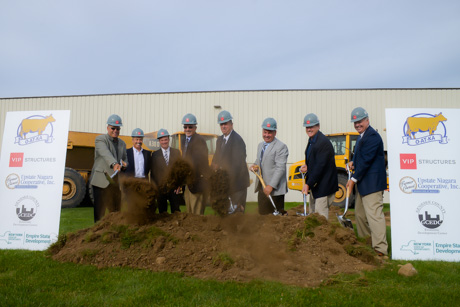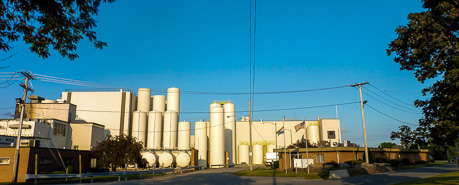Dealing just with hard numbers -- setting aside speculation on hoped-for new revenue and "the multiplier effect" of jobs created -- the tax abatement plan approved Thursday by the Genesee County Economic Development Center Board for a new hotel at Batavia Downs should be profitable for taxpayers, according to data obtained by The Batavian from a GCEDC staffer.
The abatements will save developers about 11.5 percent on their $5.49 million investment, and the new taxes the project generates will be about a 100-percent return to taxpayers, if you accept the notion that the project doesn't get built at all without the tax incentives. If not, it's at least 42-percent return.
By law, the developer must certify that the project requires a tax break to be feasible, according to Rachael J. Tabelski, marketing and communications director. That is a requirement for all projects considered by the GCEDC.
"We have to trust the applicant that when they say this project won't be a viable project without the tax incentives," Tabelski said.
ADK Hospitality, the hotel's developer, will save $638,000 in taxes over the next 10 years, but it won't be getting off totally free. The hotel's owners, over the next 10 years, will pay $1.1 million in various taxes.
Tabelski was quick to point out that the $638,000 in tax breaks is not money taken from taxpayers. It's just money that isn't paid to the government; money that doesn't exist if the project isn't built. Thus, the $1.1 million in taxes ADK will pay over the next decade is all new revenue for schools, the county and the state (but not the Town of Batavia, which doesn't have its own tax on property).
That figure doesn't include sales tax generated by the hotel, or any anticipated increase in sales tax generated by the hoped-for increase in business at Batavia Downs. It also doesn't include employment taxes generated by the anticipated $600,000 in payroll for 25 full-time equivalent new hires at the hotel.
The developers told the GCEDC Board that the project would generate a total of $2.8 million in tax revenue between now and 2025, but there isn't a breakdown available on what categories of taxes comprise that total. It likely covers fire district, property, bed tax, sales tax and payroll tax.
The $1.1 million in hard numbers we have includes:
- $56,000 paid to the Town of Batavia Fire District;
- $550,000 paid in county bed taxes;
- $500,000 paid in property taxes over the life of the PILOT.
A PILOT is a tax break given to developers of projects that industrial development agencies, such as GCEDC, believe will create or retain jobs. It is a reduction in taxes on the increase in assessed value of a property.
Let's say a property is valued at $100,000. A business ads a new wing to its building and increases the assessed value to $150,000. The business continues to pay all property taxes on the initial $100,000 in assessed value, but gets a reduction in taxes on that additional $50,000. PILOT agreements vary, but typically, there would be no taxes due the first two years of the increase, and then taxes would be incrementally increased every two years until the 10th year, when the property owner is paying the full tax bill on the increase in assessed value.
In the case of the hotel property, the developers are buying land from Western OTB, which is currently tax-exempt and has no assessed value. It will be assessed next year, and its assessed value will go from zero to whatever that assessed value is, and the PILOT will be calculated based on that increase, unless the project is not yet completed, in which case there will be only a partial assessment with a full assessment to come during the next annual assessment period after the project's completion.
The PILOT on this project is worth $300,000. The remaining abatements are for the mortgage tax on the purchase and on the sales taxes due on material purchased during construction.
As for the multiplier effect, that's a controversial notion to some, but the idea is that if you create a new job and pay that person money, they will spend some amount of that money locally, and the churn of that money will help pay other people's wages, lifting everyone's boats. That $600,000 in new payroll could be worth millions in economic growth locally.
These figures also don't include wages paid to construction workers and purchases made from local vendors -- if any -- during construction.






